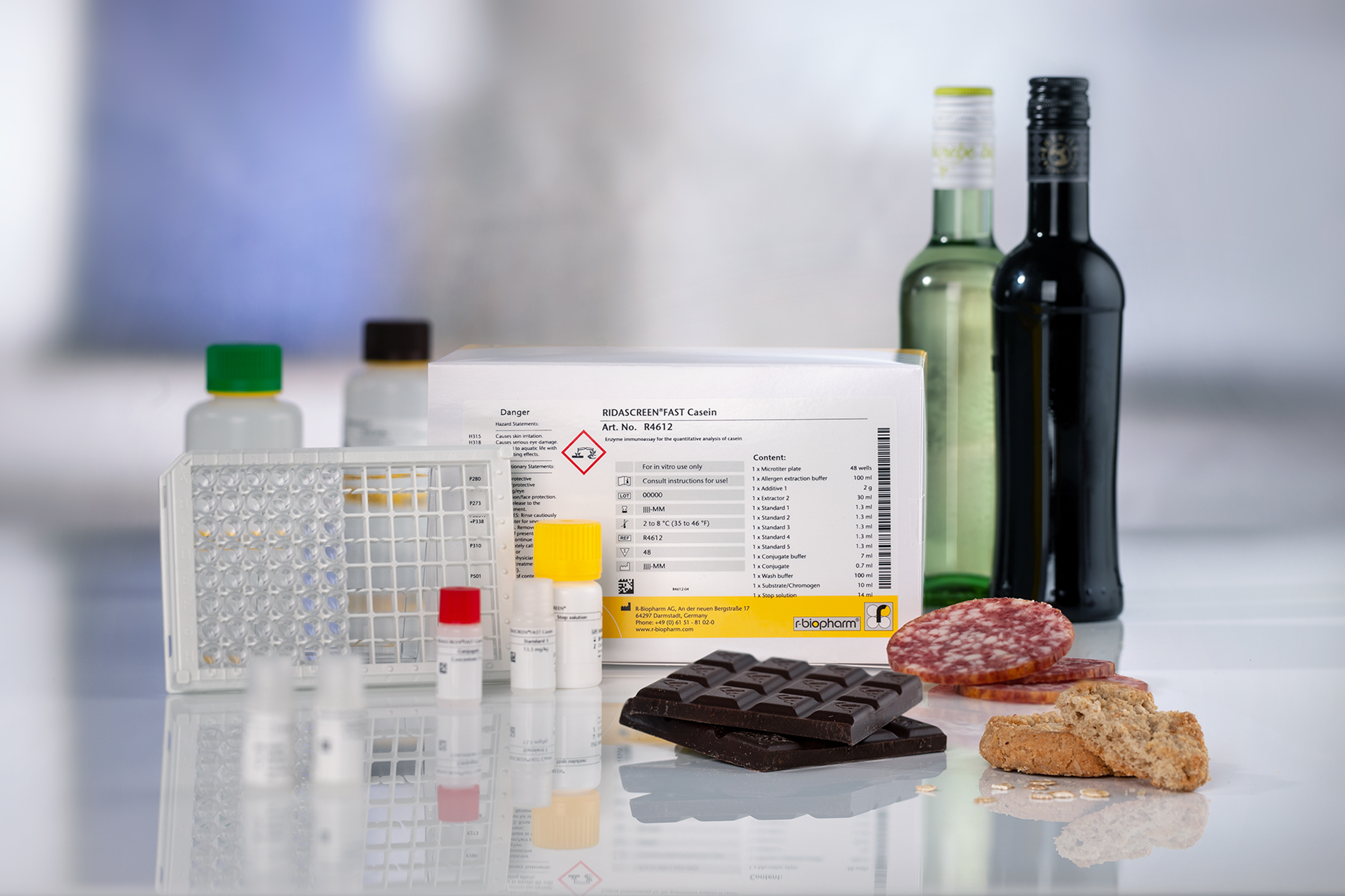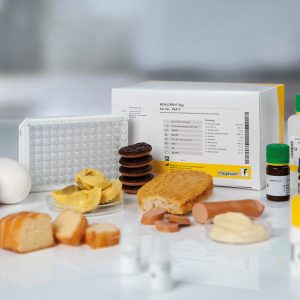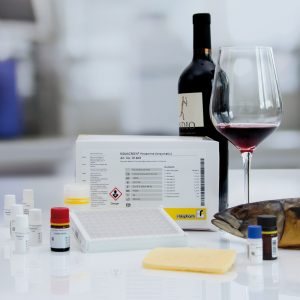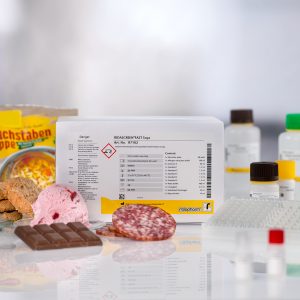Description
Intended use:
RIDASCREEN®FAST Casein is a sandwich enzyme immunoassay for the quantitative analysis of casein in food like bakery goods, cake and bread mix, non-hydrolyzed milk-based infant formula, ice cream, beverages, chocolate, wine and sausages.
General Information:
Casein refers to a family of proteins commonly found in mammalian milk. The term “casein” is derived from the Latin word “caseus”, which means “cheese”. Cow’s milk contains 3.2 % proteins, which consist of approx. 10 % ß-lactoglobulin (leading protein of whey), approx. 80 % caseins and approx. 10 % other proteins. The most important allergen for children is ß-lactoglobulin while the caseins become the dominant allergen later in adults. Caseines are also heat-stable allergens.
Cow’s milk is one of the most important allergenic components of food, especially for children. That is why the labeling of casein or milk is mandatory in many countries worldwide. Although there are no legal limits for casein, food producers are strongly advised to test for very low casein concentrations to protect people with allergies and to avoid allergen-related recalls.
Furthermore, Casein is an organic compound that is often used as a fining agent in wine production. In the fining process, casein is added to bind the suspended particles that settle out of the wine.
Casein is a rough flaked curdling protein, which forms micelles in the milk and precipitates under acidic conditions. The group of caseins consists of the α-caseins, ß-casein, κ-casein and γ-casein (proteolytic protein fragment of ß-casein by the milk protease plasmin). κ-casein can be cleaved into a hydrophobic (para κ-casein) and into a water soluble polar component (macropeptid) by proteolysis, e.g. by using lab ferment. Caseins can be present as an ingredient or as a contaminant in raw and processed food products. Skim milk powder or caseins / caseinates are often added to food products (e.g. in sausages) to increase the protein content or as thickening agent. According to the regulation (EU) No. 1169/2011, milk and products thereof must be declared on food labels. Similar regulations exist e.g. in the USA, Canada, Australia and New Zealand.
Benefits:
- Highly specific for k-casein, which is heat stable and resistant against enzymatic digestion during cheese production.
- Specificity: no cross reactivity to ß-lactoglobulin and caseins of other animal species (more than 60 matrices have been evaluated).
- A lot of application notes.
Accessories:
| Article Numbers | R4612 |
|---|---|
| Test format | Microtiter plate with 48 wells (6 strips with 8 removable wells each) |
| Sample preparation | Homogenization and extraction |
| Incubation time | 30 min Room temperature |
| LOD (Detection limit) | AEB: 0.12 mg / kg (ppm) casein (mean) 0.07 – 0.19 mg / kg (ppm) casein*RIDA® Extractor 2: 0.71 mg / kg (ppm) casein (mean) 0.41 – 0.95 mg / kg (ppm) casein* *depending on matrix |
| LOQ (Limit of quantification) | AEB: 0.5 mg / kg (ppm) casein Extractor 2: 2.5 mg / kg (ppm) casein |
| Cross reactivity | There is a cross reactivity to sheep’s, goat’s and buffalo’s milk. Any further cross reactivity is not known.
Especially, a cross reactivity to ß-lactoglobulin does not exist. |
| Validated matrices | Bakery goods, cake and bread mix, non-hydrolyzed milk-based infant formula, ice cream, beverages, chocolate, wine and sausages. |
| Available application notes |
|
| Detected analyte | Caseins of cow’s milk |
| Evaluation | Microtiter plate spectrophotometer (450 nm) |
| Instructions | |
|---|---|
| MSDS |




